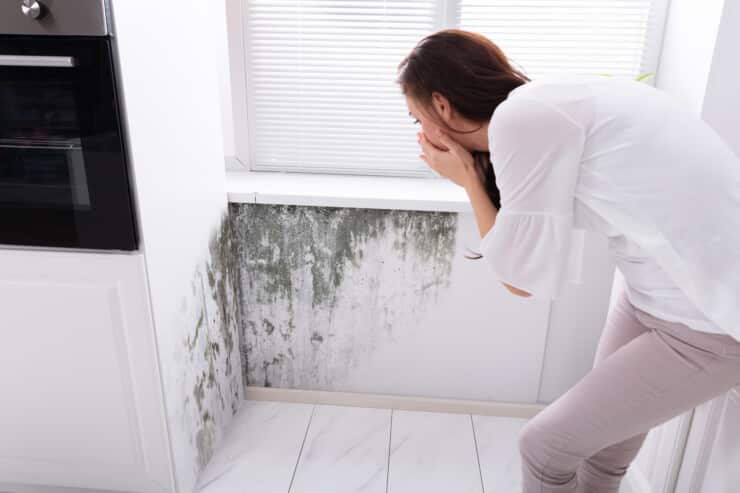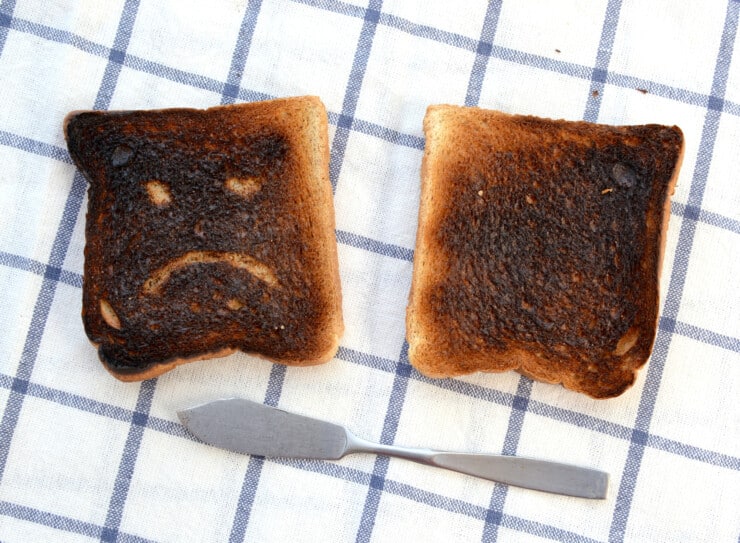Why Is There A Strange Peppermint Smell In My House?
Have you ever entered your house and been pleasantly greeted by the subtle yet noticeable scent of peppermint?
It’s as if a magical candy cane fairy has paid you a visit, spreading festive cheer throughout your humble abode.
But let’s be real – there’s no such thing as candy fairies (or is there?), so what could possibly be causing this mysterious minty scent to waft through your living space?
Before you embark on an epic quest for answers or consider calling in a team of paranormal investigators, take a deep breath and join us as we unravel this enigma together.
With our combined powers of curiosity and determination, we shall leave no stone unturned in our pursuit of mastery over the secrets behind that intriguing peppermint smell lurking within your very own walls!
Possible Sources Of Minty Aromas

Did you know that about 70% of people can identify the scent of peppermint with just one whiff?
That’s right, our noses are quite adept at picking up this distinct aroma.
When you notice an unexplained minty smell in your home, it could be due to a variety of reasons.
In this section, we’ll explore some possible sources for that mysterious yet refreshing fragrance wafting through your living space.
Minty pests control might be an unexpected contributor to the enigmatic scent permeating your house.
Many homeowners use natural pest repellants containing mint as their secret weapon against unwanted critters like ants, spiders, and even rodents.
The strong odor emitted by these products is known to deter such unwelcome guests from taking up residence within your walls.
If someone in your family has recently applied one of these solutions or if there’s been a history of pest issues in the past, then the origins of that invigorating smell may lie therein.
Unusual air fresheners also deserve consideration when attempting to uncover the source of lingering peppermint aromas.
With countless scents available on today’s market – from traditional floral fragrances to more unconventional options like bacon or freshly-cut grass – it’s not entirely outlandish to think that someone in your household opted for a mint-scented air freshener without notifying everyone else.
They might have strategically placed it somewhere less conspicuous, leaving others puzzled over where exactly those cool and crisp notes were coming from.
Keep an eye (and nose) out for any unfamiliar devices around vents or tucked into corners; chances are good that once discovered, you’ll no longer need to wonder why each room feels reminiscent of a winter wonderland!
Investigating Your Home’s Ventilation System
Let’s start by testing the air flow throughout the house.
Then, we’ll inspect the ventilation components to see if anything isn’t working right.
After that, we’ll check the air filters to make sure they aren’t clogged.
We’ll also have to make sure the fan is working properly.
Lastly, we’ll make sure there are no air leaks.
That should help us figure out what’s causing the strange peppermint smell.
Testing Air Flow
It’s frustrating, isn’t it?
You can’t seem to figure out why there’s a strange peppermint smell in your house.
It might be time to start investigating your home’s ventilation system and testing the air flow.
There are many misconceptions about how air flows through our homes; debunking these air flow myths could help you understand what’s causing that mystery scent.
Start by observing indoor breeze patterns – where is the draft strongest?
Are certain rooms more affected than others?
This can provide valuable insights into potential issues with your vents or ducts.
Don’t be afraid to get hands-on – use smoke pencils or incense sticks to visualize airflow throughout the house.
By understanding and mastering the science of air circulation within your home, you’ll gain control over unwanted odors and improve overall air quality.
Remember, resolving this issue won’t happen overnight.
Take the time to analyze each room individually, identifying any possible culprits for that pesky peppermint odor.
After examining all aspects of your home’s ventilation system, you’ll likely uncover the source of the problem and breathe easier knowing you’re on track toward eliminating it once and for all.
Inspecting Ventilation Components
Now that you’ve got a grasp on your home’s airflow patterns, it’s time to dive deeper into the nitty-gritty of ventilation components.
Regular ventilation maintenance is key for not only pinpointing odor origins but also ensuring optimal performance and air quality in your space.
Don’t worry, you don’t have to be an expert – just follow along as we guide you through the process.
Start by inspecting visible ductwork and vents throughout your home, checking for any signs of damage or leaks that could contribute to unwanted smells wafting around.
Keep an eye out for mold, dust buildup, or even small critter nests; these can all wreak havoc on your system and may very well be the root cause of that pesky peppermint scent.
It’s also crucial to evaluate filters, fans, and other mechanical parts related to the ventilation system – they’re often overlooked but play a significant role in maintaining fresh indoor air.
By thoroughly examining each component within your home’s ventilation network, you’ll gain invaluable knowledge about its inner workings while simultaneously getting closer to solving the mystery smell.
Plus, with regular inspections under your belt, you’ll become more adept at identifying potential issues before they escalate into larger problems.
So go ahead – grab a flashlight and channel your inner detective; soon enough, you’ll be mastering the art of sniffing out those elusive odors!
Checking Air Filters
Now that you’ve got a handle on inspecting the ductwork and vents in your home, it’s time to take a closer look at another crucial component: air filters.
You might not realize it, but proper air filter maintenance is essential for keeping your ventilation system in tip-top shape and preventing those pesky odors from taking over.
So roll up your sleeves and let’s dive into the world of air filters together!
To achieve mastery in maintaining fresh indoor air quality, it’s important to understand filter replacement frequency.
Generally speaking, you should replace disposable filters every one to three months or clean reusable ones at least once a month – however, this may vary depending on factors like pets, smoking habits, or allergy concerns.
By staying on top of filter replacements or cleanings, you’re actively working towards eliminating unwanted smells while ensuring optimal performance for your ventilation system.
Don’t underestimate the power of a simple task like checking your air filters; by incorporating this step into your regular home maintenance routine, you’ll be well on your way to mastering the art of odor detection!
Identifying Hidden Mold Or Mildew Issues

Now that you’ve explored your home’s ventilation system, it’s time to dig a bit deeper and identify any hidden mold or mildew issues that could be causing the strange peppermint smell in your house.
Mold and mildew are not only unsightly, but they can also pose serious health risks if left untreated.
Fear not! You’re about to become an expert at uncovering these sneaky culprits.
To start, let’s look at three effective mold detection techniques:
- Visual inspection: Thoroughly examine areas where moisture is commonly present, such as bathrooms, kitchens, basements, and laundry rooms. Look for discolored spots on walls, ceilings, floors, or even furniture.
- Smell test: Trust your nose! A musty or earthy smell is often an indication of mold growth. If you suspect certain areas might have mold issues but aren’t sure visually, sniff around those spaces to see if there’s a noticeable odor.
- Moisture meters: Invest in a moisture meter that can detect high levels of humidity inside walls or other surfaces. High moisture content may indicate the presence of mold growth behind the surface.
By using these methods to identify potential mold problems early on, you’ll protect yourself and your family from various mildew health risks like respiratory issues and allergies.
Moreover, addressing these concerns sooner rather than later will save you money on costly repairs down the line.
So go ahead—take charge of your living space by thoroughly inspecting every nook and cranny for signs of hidden mold or mildew.
With diligence and attention to detail, you’ll soon master the art of maintaining a healthy home environment free from pesky fungal foes.
Uncovering The Presence Of Peppermint-Producing Plants
Imagine walking into your house, instantly being captivated by the refreshing scent of peppermint wafting through the air.
The invigorating aroma has piqued your curiosity as you set out to uncover its source, eager to understand and perhaps even replicate this phenomenon.
This journey might lead you down an intriguing path where you discover a hidden world of Peppermint-Producing Plants.
| Peppermint pests | Aromatic allergies |
|---|---|
| Mint moth | Pollen allergies |
| Spider mites | Scent sensitivity |
| Aphids | Skin irritation |
| Cutworms | Asthma trigger |
| Slugs and snails | Respiratory problems |
Taking on the role of a botanical detective, start investigating potential sources within your home or garden that could be emitting this unexpected fragrance.
Perhaps there are plants thriving in your backyard which have developed their own natural defenses – like mint leaves releasing essential oils when disturbed by touch or movement.
Or maybe someone has thoughtfully gifted you with a bouquet containing these delightful herbs – unknowingly bringing both benefits and challenges into your living space.
For instance, while peppermint is known for repelling certain insects (like those pesky Peppermint pests mentioned above), it may also induce allergic reactions related to Aromatic allergies among some individuals.
As our exploration comes to an end, let’s remember that although we’ve learned about various pros and cons associated with peppermint-scented plants, sometimes life surprises us with fantastic experiences we never anticipated encountering.
Embrace the unexpected presence of this wonderful aromatic herb in your house; not only does it add charm to your surroundings but can serve as a conversation starter during social gatherings too!
So next time you catch a whiff of that mysterious yet tantalizing peppermint smell lingering around your abode, take pride in having unlocked one of nature’s fascinating secrets!
Eliminating The Peppermint Scent: Remedies And Solutions

You might be wondering how to get rid of that persistent peppermint scent in your home.
Fret not, for there are several remedies and solutions you can try out to eliminate this unwanted fragrance from your living space.
With the right approach and a little bit of effort, you’ll soon regain control over your household’s aroma.
Firstly, consider using scented cleaning products while giving your house a thorough clean.
Choose fragrances that will blend well with or neutralize the minty smell without overpowering it, such as citrus or lavender.
It is crucial to pay extra attention to areas where the odor may have originated or seeped into, like carpets, upholstery, and curtains.
You could also opt for an enzymatic cleaner specifically designed to break down the molecules responsible for lingering smells instead of just masking them temporarily.
Another effective method is investing in various odor masking techniques – think air fresheners, essential oil diffusers, room sprays, or even good old-fashioned potpourri bowls strategically placed around your home.
These items work by releasing their pleasant aromas gradually and consistently throughout the day while simultaneously combating any residual peppermint fragrance still lurking about.
Remember to stay patient during this process; after all, achieving mastery over one’s environment takes time and persistence!
Soon enough, however, you’ll find yourself basking in delightfully balanced scents that leave no trace of pesky peppermint behind.
Frequently Asked Questions
Can certain household cleaning products cause a peppermint smell in my home?
Ah, the sweet mystery of that unexpected peppermint aroma wafting through your home – it’s enough to make you feel like you’ve stumbled into a whimsical candy factory.
Peppermint allergies aside, certain household cleaning products can indeed cause a peppermint smell in your living space.
Manufacturers often add fragrances to their formulas to create a more pleasant experience for users and mask the harsher chemical odors.
So, before you start lighting scented candles in an attempt to overpower the minty scent, take note of any new cleaning supplies or air fresheners you may have recently introduced into your abode.
In doing so, not only will you satisfy your innate curiosity but also demonstrate mastery over maintaining harmony within your personal sanctuary.
Are there any health risks associated with a persistent peppermint odor in my house?
While a persistent peppermint odor in your house may seem peculiar, it’s generally not associated with any significant health concerns.
However, if the smell is overpowering or causing discomfort such as headaches, dizziness, or respiratory issues, you should consider investigating potential sources and implementing odor solutions to improve indoor air quality.
It’s essential to ensure that everyone in your home feels comfortable and safe, so don’t hesitate to take action if the scent becomes bothersome or affects your well-being.
Can the peppermint smell be an indication of a gas leak or other hazardous substance?
Ah, the sweet allure of a peppermint-scented home—could it be Mother Nature’s way of telling us there’s an unseen danger lurking?
While gas leak symptoms can include odd smells, it’s highly unlikely that your mysteriously minty abode is signaling something as sinister as a hazardous substance.
If you were dealing with a gas leak, you’d typically encounter more pungent odors like rotten eggs or sulfur.
So, before you start fearing for your safety and blaming innocent candy canes, consider exploring some peppermint alternatives to investigate the source of this delightful yet perplexing aroma.
After all, who wouldn’t want to master the art of maintaining a fresh-smelling haven while keeping potential dangers at bay?
How can I differentiate between a natural minty aroma and one that might be caused by an underlying issue in my home?
To differentiate between a natural minty aroma and one that might be caused by an underlying issue in your home, pay close attention to the intensity and consistency of the scent.
Minty aromatherapy or natural remedies often have a calming and refreshing smell, which may vary in strength depending on where you are in your house.
If the peppermint fragrance is overpowering, persistent throughout all rooms, or accompanied by unusual symptoms like dizziness or headaches, it’s essential to investigate further for potential hazards.
Are there any recommended professionals or services I can consult if I am unable to identify and eliminate the source of the peppermint smell in my house?
Navigating the mysterious world of unexplained peppermint smells can make you feel like a detective lost in a minty labyrinth.
If you’re struggling to uncover the source and eliminate it, consider consulting professionals such as indoor air quality specialists or home inspectors who have expertise in detecting hidden culprits behind unwelcome scents.
They may be able to help identify potential issues related to peppermint allergies, rule out seemingly innocent sources like scented candles, and provide sound advice on how to rectify any underlying problems.
By seeking expert guidance, you’ll not only gain peace of mind but also move one step closer to mastering your own household mysteries.
Final Thoughts
Imagine your home as a minty forest, filled with the enchanting aroma of peppermint.
While this might seem like a delightful wonderland at first glance, it’s crucial to determine if there are hidden dangers lurking beneath that pleasant scent.
As a responsible homeowner or tenant, don’t hesitate to seek professional help when navigating through this mysterious peppermint-smelling forest.
Identifying and addressing any potential risks will ensure you can enjoy the fresh fragrance without worry.







